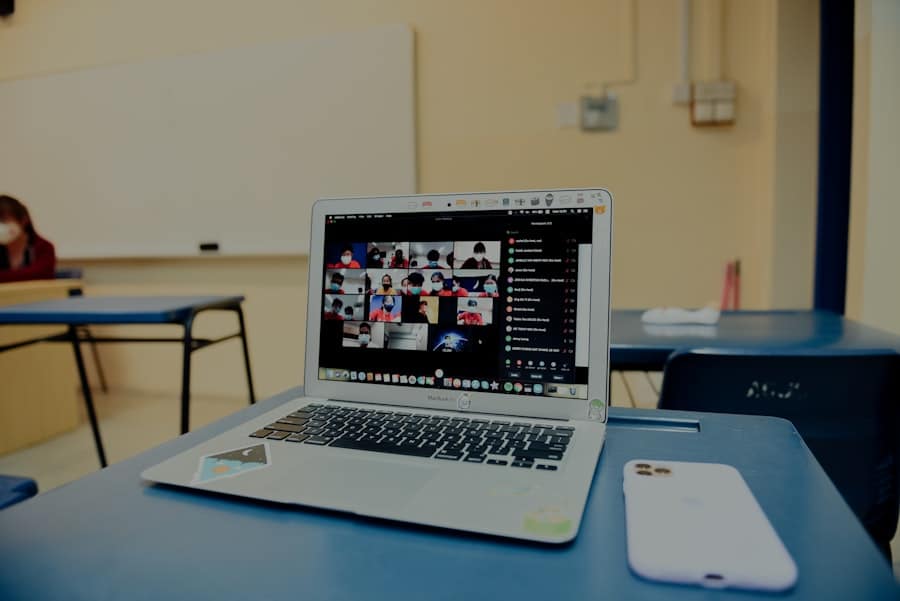Virtual reality (VR) has emerged as a transformative technology, reshaping various sectors, including education. By immersing learners in a three-dimensional, interactive environment, VR offers a unique approach to teaching and learning that traditional methods cannot replicate. The concept of virtual reality in education is not merely about using advanced technology; it is about creating engaging, experiential learning opportunities that can enhance understanding and retention of complex subjects.
As educators seek innovative ways to captivate students and foster deeper learning experiences, VR stands out as a promising solution.
With the ability to simulate real-world scenarios, VR allows students to explore environments and concepts that would otherwise be inaccessible.
For instance, medical students can practice surgical procedures in a risk-free virtual environment, while history students can walk through ancient civilizations. This immersive experience not only enhances knowledge acquisition but also cultivates critical thinking and problem-solving skills.
Key Takeaways
- Virtual reality (VR) has the potential to revolutionize education by providing immersive and interactive learning experiences.
- Advantages of VR in online education include increased student engagement, improved retention of information, and the ability to simulate real-world scenarios.
- Challenges and limitations of VR in online education include the high cost of VR equipment, potential for motion sickness, and the need for specialized training for educators.
- Virtual reality tools and platforms for online education include Google Expeditions, Nearpod VR, and ClassVR, which offer a range of educational content and interactive experiences.
- Case studies of successful implementation of VR in online education demonstrate its effectiveness in subjects such as science, history, and medical training, leading to improved student outcomes and engagement.
Advantages of Virtual Reality in Online Education
Enhanced Engagement and Motivation
Traditional online education often relies on static content, such as videos and text-based materials, which can lead to disengagement. In contrast, VR allows learners to interact with the material actively, fostering a sense of presence that enhances motivation and interest.
Personalized Learning Experiences
For instance, a biology student studying the human body can explore a 3D model of anatomy, manipulating organs and systems to understand their functions better. This hands-on approach can lead to improved comprehension and retention of information. Moreover, virtual reality can cater to diverse learning styles, accommodating visual, auditory, and kinesthetic learners.
Inclusive Education for All
By providing various ways to interact with content, VR can help bridge gaps in understanding for students who may struggle with traditional teaching methods. For instance, visual learners benefit from seeing concepts in action, while kinesthetic learners thrive on hands-on experiences. This adaptability makes VR an inclusive educational tool that can reach a broader audience, ensuring that all students have the opportunity to succeed.
Challenges and Limitations of Virtual Reality in Online Education
Despite its numerous advantages, the implementation of virtual reality in online education is not without challenges. One significant barrier is the cost associated with acquiring VR hardware and software. High-quality VR headsets and the necessary computing power can be prohibitively expensive for many educational institutions, particularly those with limited budgets.
Additionally, developing VR content requires specialized skills and resources, which may not be readily available in all educational settings. This financial burden can hinder the widespread adoption of VR technology in online education. Another challenge lies in the potential for technological issues that can disrupt the learning experience.
Technical glitches, software compatibility problems, and connectivity issues can frustrate both educators and students. Furthermore, not all students may have access to the necessary technology at home, creating disparities in learning opportunities. This digital divide raises concerns about equity in education, as students from lower socioeconomic backgrounds may be left behind if they cannot access VR resources.
Virtual Reality Tools and Platforms for Online Education
A variety of tools and platforms have emerged to facilitate the integration of virtual reality into online education. One notable example is Google Expeditions, which allows educators to take students on virtual field trips to locations around the world. With a simple smartphone or tablet, students can explore historical sites, natural wonders, or even outer space through immersive 360-degree images and videos.
This platform democratizes access to experiences that would otherwise be impossible for many learners.
This platform offers customizable VR experiences that can be adapted to various subjects and learning objectives.
For instance, educators can create simulations for science experiments or historical reenactments that allow students to engage with content actively. Additionally, platforms like Engage and ClassVR provide collaborative environments where students can interact with peers and instructors in real-time within a virtual space, enhancing social learning opportunities.
Case Studies of Successful Implementation of Virtual Reality in Online Education
Several educational institutions have successfully integrated virtual reality into their curricula, demonstrating its potential to enhance learning outcomes. One notable case is the University of Illinois College of Medicine, which implemented VR simulations for medical training. Students use VR headsets to practice surgical techniques in a controlled environment, allowing them to gain hands-on experience without the risks associated with real-life procedures.
Feedback from students has been overwhelmingly positive, with many reporting increased confidence in their skills and improved understanding of complex medical concepts. Another compelling example comes from Stanford University’s Virtual Human Interaction Lab (VHIL), where researchers have explored the impact of VR on empathy development. In one study, participants experienced a simulation that placed them in the shoes of individuals from marginalized communities.
The results indicated that immersive experiences could significantly enhance empathy and understanding of social issues. This research highlights how VR can be leveraged not only for skill development but also for fostering social awareness among students.
The Future of Virtual Reality in Online Education
As technology continues to evolve, the future of virtual reality in online education appears promising. Innovations such as augmented reality (AR) and mixed reality (MR) are likely to complement VR experiences, creating even more dynamic learning environments. For instance, AR applications could overlay digital information onto the physical world, allowing students to interact with both real and virtual elements simultaneously.
This convergence of technologies could lead to more comprehensive educational experiences that cater to various learning preferences. Furthermore, advancements in artificial intelligence (AI) may enable personalized learning experiences within virtual reality environments. AI algorithms could analyze student performance data and adapt VR content accordingly, providing tailored challenges and support based on individual needs.
This level of customization could enhance engagement and effectiveness in online education, making learning more relevant and impactful for each student.
Ethical Considerations in Virtual Reality Education
The integration of virtual reality into education raises several ethical considerations that must be addressed to ensure responsible use of the technology. One primary concern is data privacy; as students engage with VR platforms, they may generate sensitive information that needs protection. Educational institutions must implement robust data security measures to safeguard student information and comply with regulations such as the Family Educational Rights and Privacy Act (FERPA).
Additionally, there are ethical implications related to the content presented within virtual reality environments. Educators must ensure that VR experiences are inclusive and representative of diverse perspectives while avoiding stereotypes or harmful narratives. The potential for VR to shape perceptions and attitudes necessitates careful curation of content to promote positive social values and critical thinking among students.
Tips for Integrating Virtual Reality into Online Education Curriculums
To effectively integrate virtual reality into online education curricula, educators should consider several key strategies. First, it is essential to align VR experiences with specific learning objectives. By identifying clear goals for what students should achieve through VR interactions, educators can create meaningful experiences that enhance understanding rather than distract from core content.
Collaboration among educators is also crucial when implementing VR technology. Sharing best practices and resources can help overcome challenges related to content creation and technical support. Professional development opportunities focused on VR integration can equip educators with the skills needed to design effective lessons that leverage this technology.
Finally, gathering feedback from students is vital for continuous improvement. By soliciting input on their experiences with VR content, educators can identify areas for enhancement and make necessary adjustments to optimize learning outcomes. Engaging students in this process fosters a sense of ownership over their education and encourages them to take an active role in their learning journey.
In conclusion, while virtual reality presents exciting opportunities for enhancing online education through immersive experiences and interactive learning environments, it also poses challenges that require careful consideration and planning for successful implementation.
Virtual reality technology is revolutionizing the way online education is delivered, providing immersive and interactive learning experiences for students. This article explores how virtual reality is changing the landscape of online education and discusses the benefits it offers in terms of engagement and retention. For more information on the best software for enhancing user experience, check out this article on enicomp.com.
FAQs
What is virtual reality (VR) and how is it used in online education?
Virtual reality (VR) is a computer-generated simulation of an environment that can be interacted with in a seemingly real or physical way. In online education, VR technology is used to create immersive learning experiences that allow students to engage with course material in a more interactive and hands-on manner.
What are the benefits of using virtual reality in online education?
Using virtual reality in online education can enhance student engagement, improve retention of information, and provide a more interactive and immersive learning experience. VR can also help students to better understand complex concepts by allowing them to visualize and interact with the subject matter in a three-dimensional space.
What are some examples of how virtual reality is being used in online education?
Virtual reality is being used in online education to simulate virtual field trips, provide hands-on training in technical skills, and create immersive learning environments for subjects such as science, engineering, and history. VR is also being used to create virtual classrooms and collaborative learning experiences for online students.
What are the challenges of implementing virtual reality in online education?
Challenges of implementing virtual reality in online education include the cost of VR technology, the need for specialized training for educators, and the potential for technical issues with VR hardware and software. Additionally, ensuring that VR experiences are accessible to all students, including those with disabilities, is an important consideration.
How is virtual reality expected to impact the future of online education?
Virtual reality is expected to continue to play a significant role in the future of online education, as advancements in VR technology make it more accessible and affordable. VR has the potential to revolutionize the way online courses are delivered, providing students with more engaging and interactive learning experiences.



